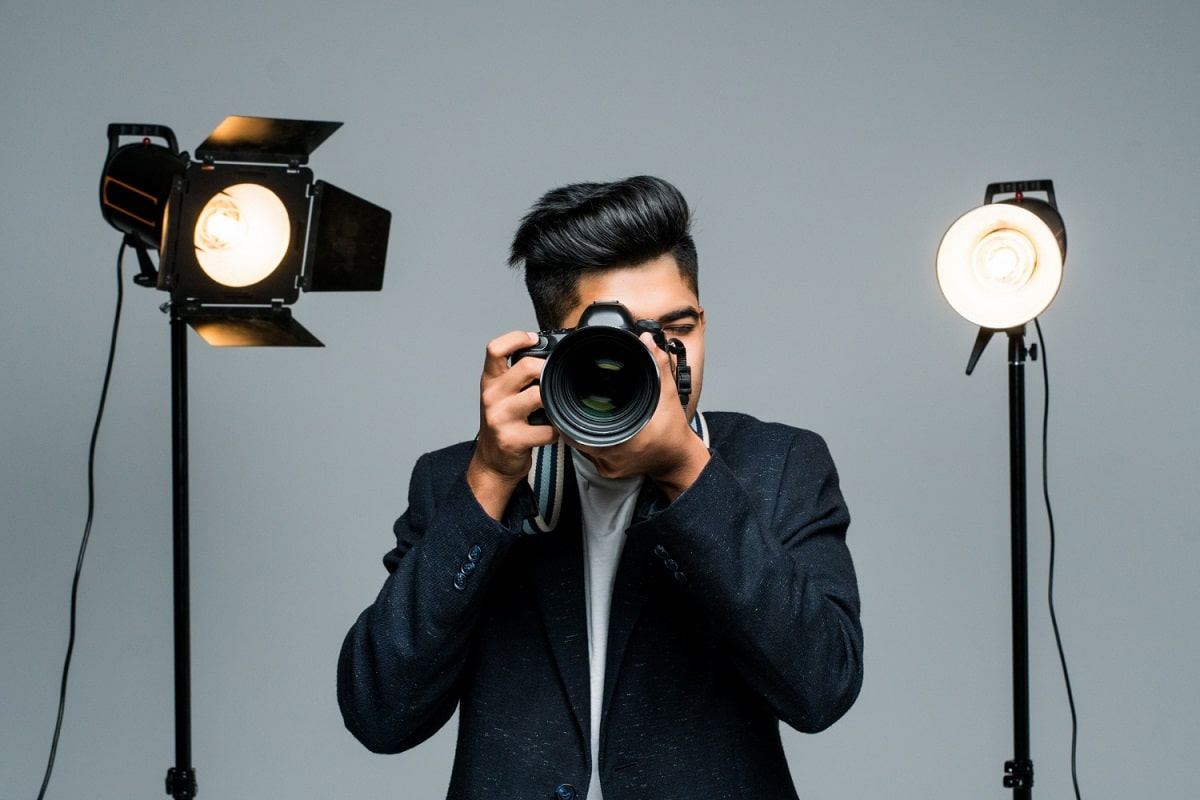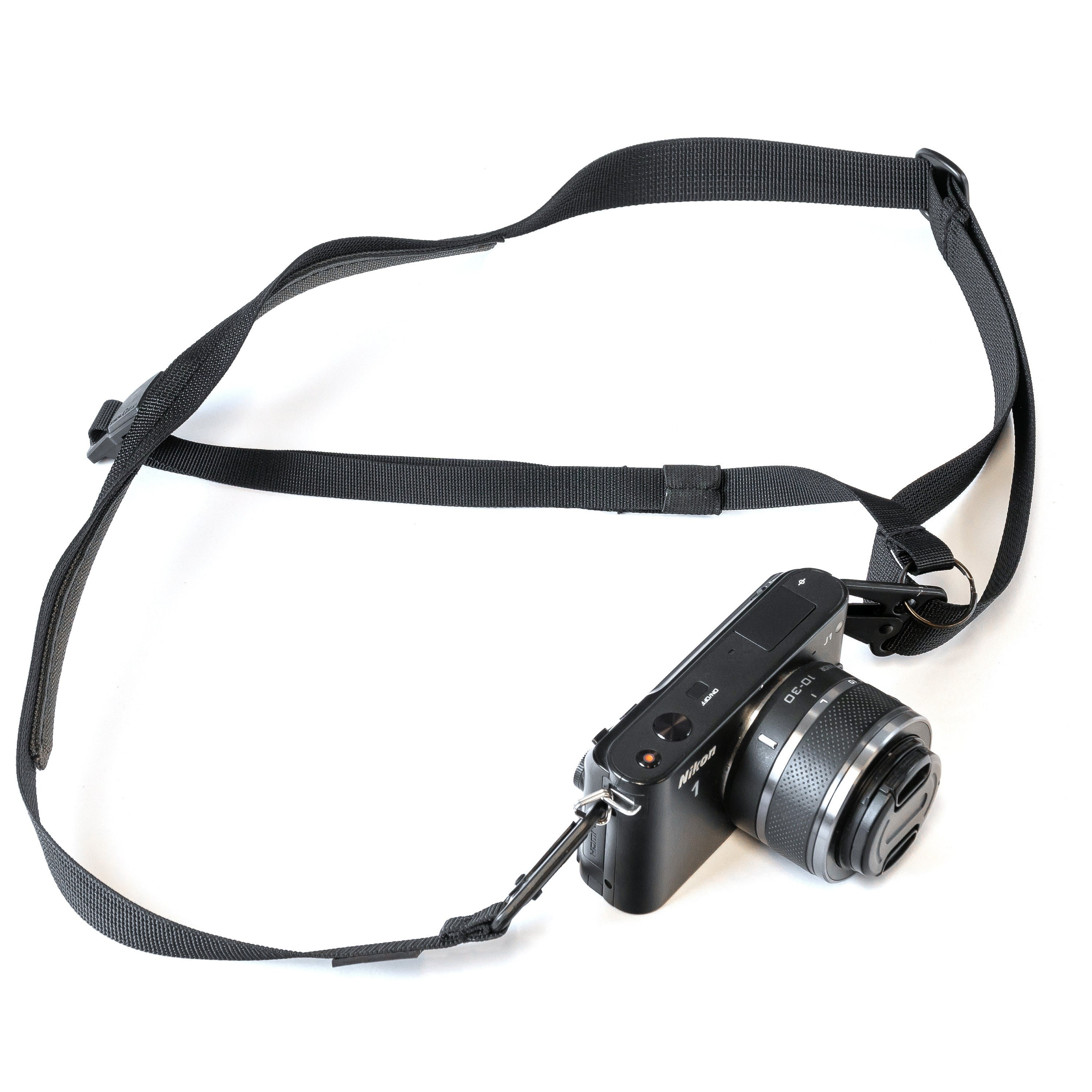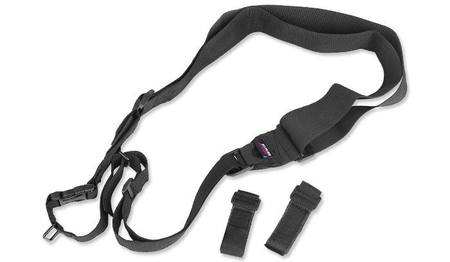A “3 Points Slinger for Camera” is a unique type of camera bag. People carry it on their shoulders or chest. The body of the bag is often round and the straps are usually attached crosswise. These three-point sling bags provide room on either side of your back, allowing you to move freely while wearing them. They are excellent camera bags since they are large enough to hold a DSLR camera and lenses while being small enough not to interfere with walking or jogging through streets. There are three types of slings: plain, two-point, and three-point, and this article will look at the best three-point sling bags for cameras of all sizes.

You can use a 3-point slinger in almost any situation where you are moving from one location to another. When traveling with camera gear, it’s much easier to keep track of your equipment when it’s directly next to your body, especially on busy streets or on public transport. These bags are popular because they are compact (more space efficient than backpacks). Also, you can wear it on different parts of your body. Most importantly, 3-point sling bags provide a middle ground between hip packs/fanny packs and full-size backpacks. They also provide more space than a hip pack while also being more practical than a fully loaded backpack. In this article, we are talking about this topic. So, keep reading to know more about it.
3 points slinger for a camera bag
On the internet, you’ll find people associating sling bags with hip packs (or waist packs, fanny packs, bum bags, belt bags, or whatever you want to call them), but sling bags and hip packs aren’t the same things. We’ll say it again: sling bags and hip packs are not the same things. Simply, a hip pack is a rebranded fanny pack, but a sling bag is something else. A hip pack is nearly always a sling bag, albeit not always a good one, whereas a sling bag is almost never a hip pack (like a square is a rectangle, but a rectangle is not a square).
Having said that, practically every brand has its own definition of a sling bag and a hip pack. To further complicate matters, some brands may use the phrase “crossbody bag” to describe what we consider a sling bag. As a result, things grow complicated—and our rules and definitions are far from absolute. Since carrying a backpack in the front and a backpack in the back hasn’t caught on yet, a sling bag offers a great place to keep your pocket stuff, especially when in transit. Simply chuck everything into your sling and toss the whole thing in a bin as you fly through airport security like an expert, avoiding the dreaded “security shuffle.”
More Details
And, unlike pockets, a sling bag can hold practically everything you may desire in flight. Of course, the contents of your sling bag are as unique as you are. Here are a few ideas based on what has worked for us:
- A mobile phone
- Snacks (probably the most crucial) (arguably the most important)
- USB cords
- Chargers for electronic devices
- Bank of batteries
- Earplugs (every plane has at least one wailing infant, even if it’s your own; it’s like a physical law)
- Mask for the eyes
- Headphones
- Notepad with a pen (something about being at 35,000 feet gets the creative juices flowing)
- Tissues
- A book or an e-reader (depending on your sling, some are too small to fit one).
Once in the air, use a carabiner to secure your sling bag to the seat in front of you. That way, you can get food before you become hangry, some tissues because the movie you choose is a lot sadder than you expected, or a phone charger since Tetris consumes battery life shockingly rapidly. You know, simply the necessities.

3 points slinger Instructions
We think that most of you are familiar with two-point slings, as they appear to be the most common choice among most shooters. A single-point sling is the second most frequent variety. Although single- and two-point slings dominate the market, there is an additional sling to consider, the Mythic Sling. But it is extremely rare. It has seldom been tamed by shooters, range aficionados, operators, or gunslingers. I’m referring to the three-point sling, of course. Obviously, some of that is a dramatization. It features three points of contact with the gun like a three-point sling. With the rifle, the sling almost creates a figure-eight configuration. In all fairness, people don’t use three-point slings these days.
A three-point sling has three points of contact with the rifle if you’ve never seen one before. With the rifle, the sling almost creates a figure-eight configuration. A loop wraps around your torso, and another loop attaches to a front point and a rear point on the weapon. Three-point slings are not often used. After conducting some internet research and scrolling through gun social media posts, I couldn’t discover a single individual using a three-point sling.
3 points slinger for camera Types
This review provides an overview of what a 3-point slinger is for cameras. I’ll go through various different types of camera harnesses and straps. Prices range from less than $20 to more than $100. As a result, you’ll need to plan ahead of time for your budget. The ranking starts with the least expensive and works its way up to the most expensive.

3 points slinger for camera Ocim
The Ocim 3-point Slinger for camera costs a little extra. It looks almost identical to the PiuQ. It does, however, have one significant improvement. The camera’s body is fitted with a safety strap, as is the slinger’s strap. This can give a great deal of security. It is fastened to an eyelet on the strap on the camera side. The sling then has a sturdy metal carabiner that latches. A strap beneath the arm provides cushioning support for the shoulder strap. The straps may be adjusted and include locking mechanisms. This prevents the camera from moving around.
3 points slinger for camera PiuQ
The PiuQ is screwed into the tripod screw located on the bottom of your camera. The screw-in eyelet has a rubber base to protect the body of your camera. You can adjust the strap length to a maximum of 21.5 millimeters. It may be fastened to the eyelet with a locking carabiner. An under-arm strap stabilizes the thickly padded shoulder strap. Its scratch resistance is a fantastic characteristic. The shoulder pad is long-lasting. My main issue is the lack of a security strap. If the solitary link is lost, you and your finances are also lost. In order to utilize the tripod, the eyelet must be removed. This may also restrict the usage of. However, it has the drawback of being pricey. PiuQ is really affordable.
USA GEAR TrueSHOT
Three-point To yet, Slingers’ global camera has been dreary and dismal. However, the USA GEAR TrueSHOT adds some color to the scene. It also performs admirably in a variety of other areas. The tripod thread is on the mounting plate. You may use your tripod to put it on. It comes with a stabilizing underarm strap. An adjustable lockable carabiner is used to secure the sling. There are two pockets in all. One is for memory cards, while the other is for other devices. The main drawback is the lack of a rapid-release mechanism for security straps. This is a troubling omission. It’s a benefit that it’s designed to allow two slings to be joined together. As a result, you may bring two camera slings. Maybe you could put your backup lens on the other sling.
3 points slinger for camera Benefits
A 3-Point Slinger is an appropriate tool for moving and transporting cameras. You may move your camera around with this simple device without worrying about damaging it or injuring yourself. The following are some of the primary benefits of using a 3-Point Sling.
- A 3-point camera slinger is ideal for transporting small items: When traveling, a 3-point slinger for a camera bag is an excellent place to put little items. Load your items into your sling bag as you pass through airport security; unlike pockets, a sling bag can contain almost anything you could need throughout the flight.
- A three-point camera slinger is suitable for brief excursions: A camera bag 3-point slinger might be the ideal travel companion. If all you need is a wallet, keys, and phone, pockets may be beneficial. Even if your pockets are filled, there will be occasions when you require a few “extra” items but not enough to necessitate carrying an entire bag.

- A three-point slinger for a camera is not only simple to operate, but it also looks nice. Its attractive design will catch people’s attention. It’s also an excellent instrument for capturing breathtaking images of your subjects. Simply place your camera in the proper position and utilize the 3-point slinger to obtain the ideal shot. So buy one and start working on your photos.
3 points slinger for camera pockets
The pricing is the next factor to consider. Some versions are inexpensive, yet they lack essential functions. You should study reviews on various 3-point slingers For Cameras and select the one that best suits your budget and demands. Make sure you compare several types of 3-point slingers For Camera to choose the best one for your camera. Some qualities are more significant than others, and you should select a model depending on these considerations. Aside from being waterproof, a camera 3-point slinger should also have essential organizing functions. A mesh pouch is good for little objects, whilst zipped compartments are ideal for photography equipment. Finally, look for one with an easy-access camera cradle for simple access and safe storage. For ultimate strength and flexibility, the BlackRapid Breathe Curve blends bombproof webbing with ripstop nylon.

3 points slinger for camera Fabrics
A three-point camera slinger is a common accessory among outdoor photographers. It secures your camera close to your body when you walk or run. The camera sling’s three points of support are adjustable, making it simple to use and alter as needed. This item can be worn for extended periods of time without becoming exhausted or painful. A 3-point slinger for the camera, unlike a tripod, is easy to modify and can fit different-sized weapons. The fabric utilized for the strap is vital to consider when purchasing a sling. The majority of slings are made of fabric, however, they can also be constructed of leather. Furthermore, while choosing a cloth, keep the length of the camera strap in mind. A DSLR camera, for example, will require a longer sling than a small camera. A longer sling is recommended for DSLR cameras, while a shorter sling is required for smaller models.
3 points slinger for camera Leathers
A 3-point slinger For the Camera is an essential piece of equipment for photographers. While typical camera bags can be cumbersome and hefty, 3-point slingers have several advantages. They generally include additional compartments and organizational features and distribute weight more evenly. Moreover, people have designed it to be easy to carry on the shoulder. This allows you to use the bag for long periods of time without feeling back strain.
High-quality leather is good for making a good camera slinger. The primary body is around 10′′ wide and 4′′ deep, allowing for a 28-300mm lens. In the United States, people tan and polish these leather slings. Its quick-release anchor fasteners provide superior abrasion resistance. People have made it with high-quality full-grain leather and designed to fit any camera securely. The buckles on the sling are also lockable for further security. The Glide One Strap System is a sling strap that is extremely comfortable. Slings are worn on one hip and slide up the strap.
When the strap is connected to a QD hub, it may be transformed into a single-point sling. A 2-point sling is suggested for heavy camera setups. This type is ideal for budget-conscious photographers.

Some Frequently Asked Questions
What is a camera sling?
A camera sling bag is a smaller version of a backpack. People carry it on one shoulder. Slings feature a single strap that crosses your torso diagonally. Sling bags for cameras combine the greatest characteristics of a backpack and a shoulder bag. The bag fits like a backpack on your back.
Do I need a bag to transport my photography gear?
No, you do not need a backpack to transport your stuff. Many photographers use camera backpacks, particularly if they travel or go on treks with their gear regularly, while some photographers prefer alternate methods. Personally, I like camera backpacks, but there are plenty of alternative options for photographers who don’t need to carry a lot of gear and want quick access at all times, such as pouches and holsters.
What are the best camera bags?
That is entirely dependent on your requirements. Hard cases are ideal if you travel regularly and want to keep your gear as safe as possible; pouches are ideal if you’re a casual photographer who requires rapid access to your camera; and backpacks are ideal if you blend travel with walkaround shooting but don’t need lightning-fast access. There are also several different types of camera bags, such as shoulder bags, sling bags, and camera holsters. To be honest, if I had to propose the camera bag type that is most beneficial for the majority of photographers, I’d go with a camera backpack. They’re quite adaptable and can carry a lot of gear or very little, depending on your needs.
What types of 3-point slingers for cameras are available?
The market has a wide range of three-point slingers from various brands or firms. It’s critical to select the one that best suits your camera and shooting style. One of the most well-known 3-point slingers is the Brooks 3-Point Slingshot for DSLR and Mirrorless Cameras. The Vanguard and Benro 3 Point Slingshots for DSLRs and Mirrorless Cameras are both three-point slingshots.
How To Use A 3-Point Slinger with a Camera?
- First, you need to wear a strap around your waist.
- Adjust the strap until it is snug, then secure the buckle beneath the shoulder. it.
- Adjust the strap’s total length.
- Tighten the strap around the lowest section of the camera.
- Connect the strap to the camera and the carabiner to the strap.
Do I need a hard case to transport my camera gear?
No, absolutely not! Because hard cases are large, heavy, and expensive, most photographers do not possess one. Hard cases, on the other hand, are beneficial if you often travel with your equipment and are concerned about it becoming damaged; they are cumbersome, but they may be well worth it.
Do I need a camera neck strap?
If you’re going to carry your camera about, you’ll need some kind of strap to keep it secure. It may be a neck strap, a wrist strap, a camera bag with a strap, a hand grip, a holster, a harness, a belt clip, or even a finger strap.